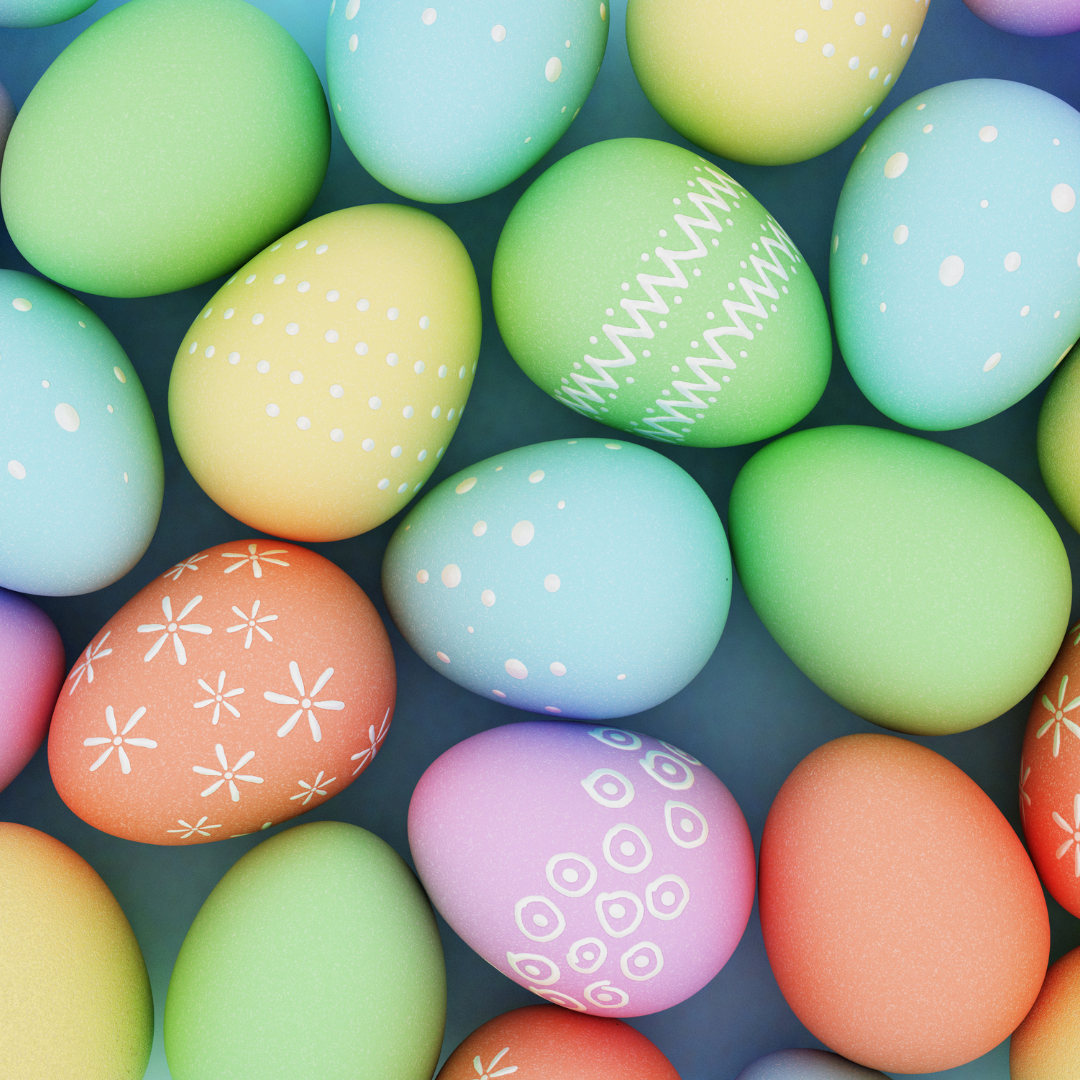Easter has many fun symbols to celebrate the holiday and the springtime. One of the most crucial Easter decorations are Easter eggs.
Throughout history, people across the world have traded eggs at spring festivals in celebration of the end of winter. The tradition of dyeing eggs dates all the way back to Mesopotamia, where early Christians would dye eggs in Springtime to welcome the new season. This tradition became very popular and soon spread throughout Western Europe, as people began to associate the colorful eggs with the Easter season. Eggs often represent new life and rebirth, as does Easter, making them the perfect decor for the holiday.
In the nineteenth century, eggs would be boiled with onion skins, giving them a golden hue, or wrapped in wet flowers, which would naturally dye them, creating yellow and brown patterns. Today, Easter eggs are more vibrant, as the boiled eggs are usually dipped in vinegar and food color to achieve a variety of bright and fun colors. Follow this easy process to create brightly colored Easter eggs:
- Place eggs in a large pan and add enough cold water to cover eggs by 1 inch. Bring just to boil on high heat. Remove from heat and let stand for 12 minutes.
- Run eggs under cold water until cool.
- Mix ½ cup water, 1 teaspoon vinegar and 5 drops of food color in a cup. Repeat with your various colors, with each color in a different cup
- To customize the eggs even further, take a crayon and draw on the egg before you place it into the dye. The wax of the crayon will be seen through the dye, so you will be able to see your fun patterns on the egg!
- Dip hard-boiled eggs in dye for about 5 minutes each. Use a slotted spoon, wire egg holder, or tongs to add and remove eggs from the dye. Allow eggs to dry.
In the 18th century, eggs soon became a celebrated Easter tradition for households around the world. The tradition of Easter egg hunts added to the Easter egg tradition. Easter egg hunts originated in Germany and are linked to the Easter bunny. According to German tradition, a hare would bring a basket of brightly painted eggs for all the children who had been good and would hide them around the house and garden for the children to find. In the U.S., the hare is the Easter Bunny.
Originally, the eggs in Easter egg hunts were the dyed hard boiled eggs. Now, the tradition has shifted slightly, as often Easter egg hunts consist of plastic eggs filled with candy, money, or other fun surprises. However, the tradition of dyeing eggs continues today, as families still participate in this beloved tradition to celebrate the Easter holiday.

